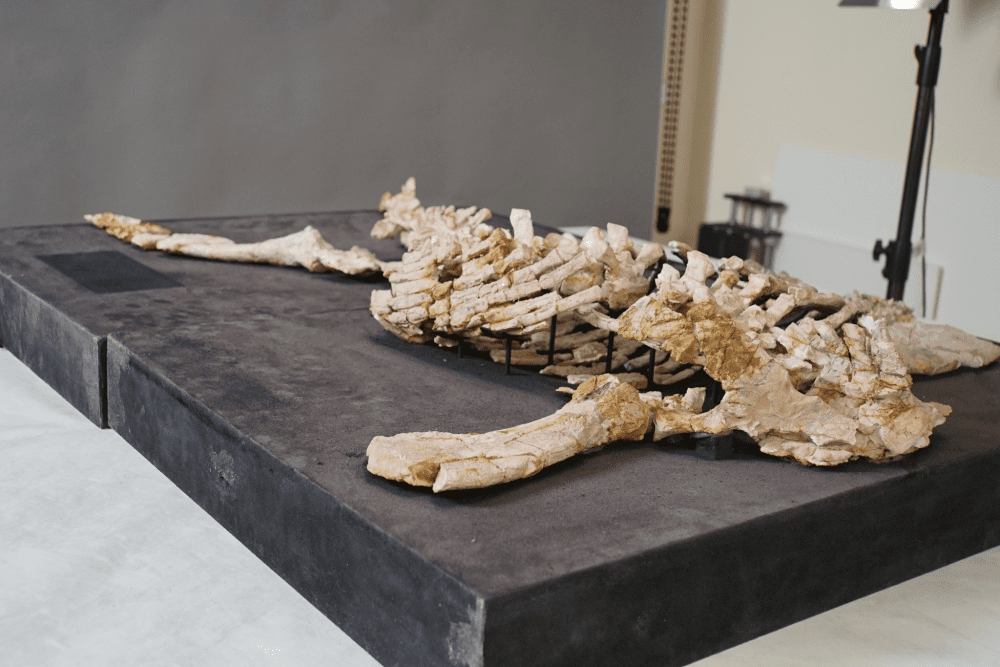A plesiosaur known as “Eric” has given palaeontologists a leg up in understanding the diet of these prehistoric marine reptiles that lived between 208 and 66 million years ago. Taking a close look at Eric’s last meal using X-rays, researchers discovered 17 vertebrae of a previously undescribed teleost fish, demonstrating plesiosaurs were indeed pescatarians.
Eric is a particularly fancy plesiosaur as his remains have been opalized, a phenomenon that’s almost unique to Australia that turns remains into literal gems. They form because rather than preserving specimens in agate, pyrite, or limestone like other fossils, they are preserved in silica creating beautiful iridescent remains, according to the Australian Opal Centre.
The opal mines in Coober Pedy, South Australia, are where Eric was first discovered back in 1987, and he was quite the find.
Eric the opalized plesiosaur (Umoonasaurus demoscyllus) is on display at the Australian Museum. Image credit: Abram Powell
“Eric is one of the most complete opalised vertebrae skeletons in Australia,” said PhD researcher Joshua White, from the ANU Research School of Physics and the AMRI, in a statement.
“The fossil is approximately 93 percent complete, which is pretty much unheard of in any fossil record. There is practically nowhere else other than Australia that can actually get opalised vertebrae fossils.”
Previous studies have attempted to learn more about Eric, who lived somewhere between 120 and 90 million years ago, by looking at the surface of his shimmering remains, but this new research instead decided to peer inside the fossil using X-rays. Doing so meant they could look for signs of preserved stomach contents without having to destroy such a rare and ancient specimen.
A micro-CT scan of the inside of the fossilized stomach remains of the plesiosaur nicknamed Eric. The 3D model shows gastroliths, also known as stomach stones, that were found in Eric’s gut. Image credit: Joshua White/ANU
Powerful X-rays enabled them to see the animal’s stomach contents in never-before-seen detail, but understanding the resulting scans required sifting through mountains of data and CT imagery to tell fish bones apart from gastroliths and other stomach contents. Eventually, they were able to create a 3D model of his final meal, revealing that these reptiles were like the sea lions of their time, hunting small fish while probably being at risk of predation themselves.
As well as providing new insights into the diets and lifestyles of plesiosaurs, the research can help us map these animals’ evolutionary past and better understand how predicted changes in climate could affect extant marine life.
“As environments change, so too does a marine reptile’s diet and understanding these changes can be used to help predict how animals of today will respond to current and emerging climate challenges,” White continued.
“If there’s any change to an animal’s diet, we want to look at why this change occurred and by some measure we can compare this to modern animals such as dolphins or whales and try to predict how their diets might change due to climate change and why.”
The study is published in Alcheringa: An Australasian Journal of Palaeontology.
Source Link: Stunning Opalized Plesiosaur Reveals New Fish Species Thanks To Fossilized Stomach Contents
